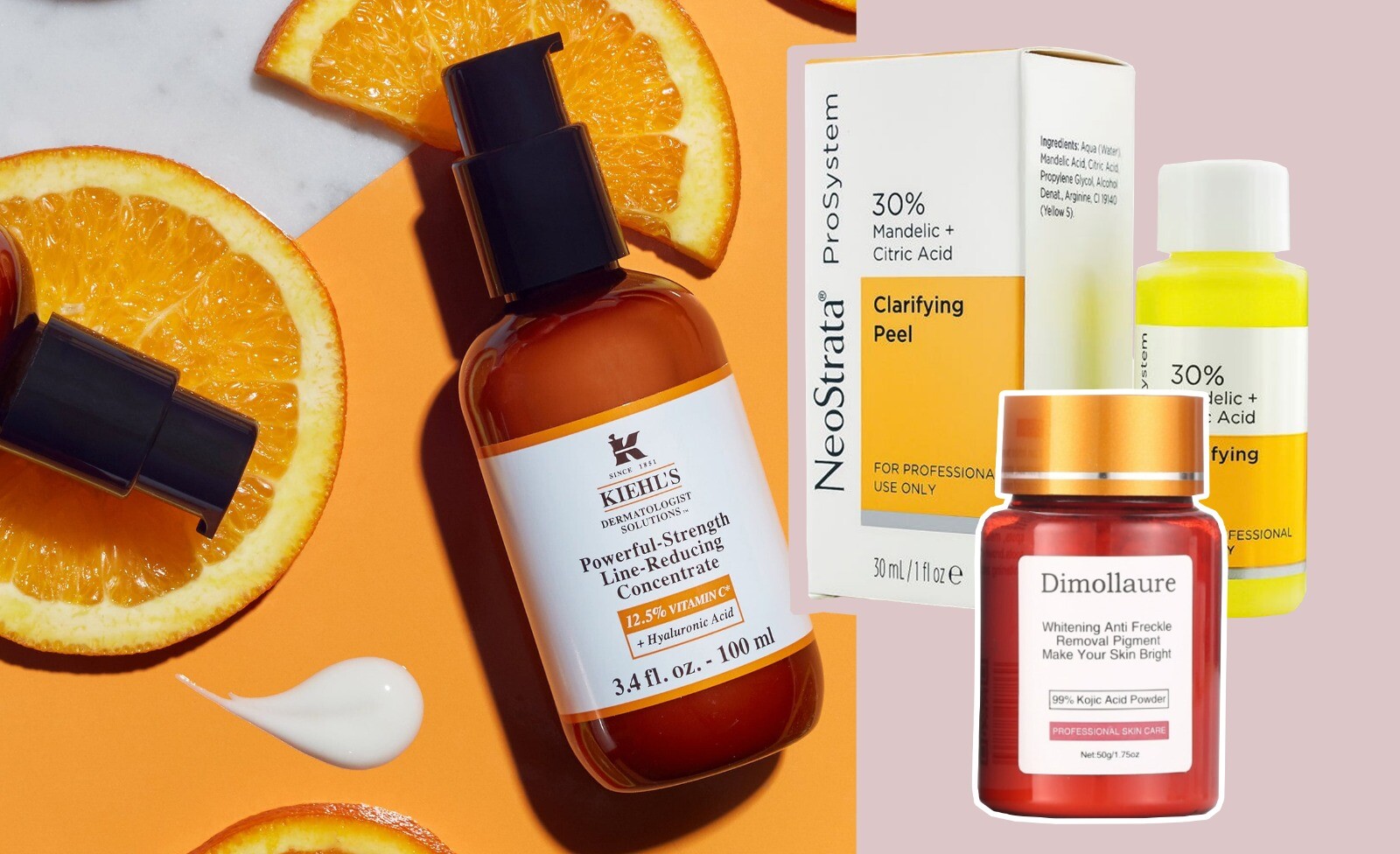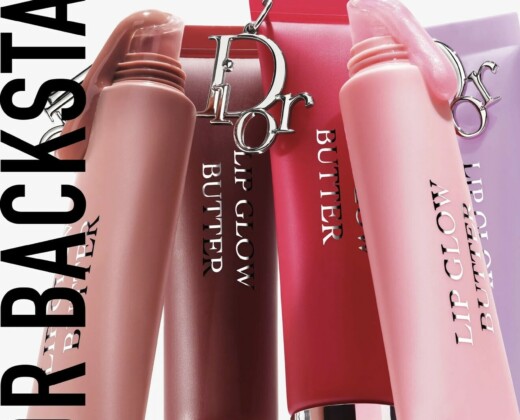
“Start low and go slow” is the go-to rule when incorporating acids into your skincare routine, according to dermatologist and physician, Dr. Muneeb Shah (a.k.a @doctorly). For the majority, the skin is a very sensitive affair that is easily prone to irritation and inflammation. One wrong step or a slightly dubious product, your skincare journey can take a real knocking.
While the concept of applying acid onto raw skin doesn’t sound like a move for the faint-hearted, many products have come onto the skincare scene which features transformative ingredients that are game-changers for your skin. Those being, acids. Scary sounding, sure, but acids act as a gateway to achieving a smoother, even, and radiant complexion.
With acids taking over the skincare market, it’s no doubt popularity comes opinion. It seems as though one bit of advice is contradicted by the next. Overwhelming doesn’t even cut the complexities of understanding the types of acids; what they are and how they should be used. Turning to Dr.Shah for advice on the skincare craze of the moment, we get every do, don’t, question and query answered about using acids. Gathering over 1 million followers on Tik-Tok, Dr. Shah got us through the COVID-19 lockdown with savvy Tik-Tok content, enlightening our eyes to the world of skincare.
Whether Salicylic, Glycolic, or Hyaluronic, there is no reason to stay clear of acids (with a slight level of caution.) Acids are here for the long run.
What’s the importance of including acids in your skincare routine?
Alpha hydroxy acids (AHAs) and beta hydroxy acids (BHAs) have multiple benefits to the skin. Acids help to exfoliate, removing dead skin cells within the top layer of the skin. This ultimately improves texture, tone, and uneven pigment. At higher concentrations, they can even boost collagen and minimize the appearance of fine lines and wrinkles.
Is there a limit to how often you should use skincare acids? What happens if you overuse them?
How often we use acids really depends on our skin type, our treatment goals, and the formulation of acids that we use. For example, someone with acne-prone skin, using salicylic acid (BHA) wash every day may be appropriate. As a general rule, leave-on products with exfoliating acids (serums, etc) should be used approximately 2 times a week. For individuals with sensitive skin, it’s better to use them even less often to prevent irritation.
Overusing acids can lead to inflammation and irritation, which usually causes dry, red, and flaky skin. Unless you’re under the supervision of a skincare professional, if you’re products are burning when you apply them, that’s usually a bad sign.
What’s the most crucial thing to remember when choosing which acids to use on your skin?
When using any product, the most crucial thing is to put safety first. I always tell all my patients to “start low and go slow.” Skincare is a marathon, not a race. It’s best to start using acids at the lowest concentration possible for the shortest amount of time and gradually increasing it as tolerated. Another thing to consider is what your skin issues are and whether the acid that you’re incorporating into your skincare is even addressing your underlying problem!
What is an absolute no-go when it comes to using acids?
Never apply acids to the skin when the skin barrier is broken. For example, I have seen trends of people using acids after dermarolling or micro-needling at home. This is extremely dangerous. Another mistake that I see people make with acids is not using sunscreen in the morning. After using acids, your skin is more likely to burn in the sun for a few days after.
With each skin type comes a different skincare routine. Dry, oily, or acne-prone, your skincare needs will differ depending. Meaning the hunt for your ideal acid will follow suit. With an extensive amount of acid bursting products available for our hands to grab onto, understanding which one to go for is a challenge in itself. But with guidance, it’s a move anyone can take.
Salicylic Acid?
Salicylic acid is the only BHA that is regularly used in skincare. In contrast to AHAs, salicylic acid is soluble in oil, which makes it very effective at penetrating our pores and treating oily, acne-prone skin. In fact, it’s one of the top 3 over the counter ingredients used to treat acne. Similar to AHAs, it also exfoliates the skin, improves hyperpigmentation, and minimizes fine lines and wrinkles.
Glycolic Acid:
Glycolic acid is a type of AHA [acid] derived from sugarcane and is one of the best-studied acids for our skin. It is the smallest AHA, which allows it to penetrate the skin better. Depending on the strength it can have many benefits, from reducing wrinkles and acne scarring to improving hyperpigmentation.
It can be used for all skin types, however, individuals with sensitive skin or those who are prone to post-inflammatory hyperpigmentation should use glycolic acid with caution to prevent over-irritating their skin, which can paradoxically worsen hyperpigmentation. Without diving too deep into the chemistry, the pH of any formulation of glycolic acid plays a huge role in how powerful it is.
Hyaluronic acid:
Hyaluronic Acid (HA) is a humectant that is naturally very abundant in our dermis, which is the lower layer of our skin. Humectants are substances that retain moisture. In fact, HA is well known for its ability to hold 1000x times its weight in water.
HA is suitable for all skin types and is most effective when used in moist climates and applied to damp skin. Depending on the formulation of HA, it can be very hydrating to the skin and have a “plumping” effect. However, don’t expect a miracle with topical HA, as most of the benefits will be temporary.
Citric acid
Citric Acid is a type of AHA derived from fruits, but it is not used in skincare products as frequently as other AHAs. Similar to glycolic acid, it exfoliates the skin, improves hyperpigmentation, and minimizes fine lines and wrinkles. Citric acid has not been studied nearly as much as other acids in skincare and higher concentrations may be needed than what’s available in our skincare products in order to see a benefit.
Kojic acid
Kojic Acid is a skincare ingredient that is produced by fungi and inhibits a vital enzyme in pigment synthesis. It is suitable for all skin types of skin; however, it serves the most benefit in treating individuals with hyperpigmentation, melasma, and uneven skin tone. Kojic acid can cause irritation and sensitization in some people. It’s also worth noting the kojic acid was banned in Japan in 2003 due to concerns that it may cause cancer. However, further studies showed that the ingredient had minimal risk and is still generally considered safe by most scientists.
The skincare landscape is a challenging one to navigate. Terminology is exten-sive and trends, whether new or old, always introduce more vocab into our skincare beauty book. So, to clear up any confusion, here’s a go-to glossary on acids you may want to take note of.

Acid Glossary:
Hyperpigmentation: Is a term that refers to when the skin becomes discolored or darkened. Whether that’s due to sun damage, acne scarring or inflammation it will leave your skin looking uneven due to the pigment-making cells in the skin being lowered.
Melasma: is a form of hyperpigmentation that is, for the majority, seen in women. It can be triggered by UV exposure (a.k.a tanning) but the big factor being… hormones. Going hand in hand with hyperpigmentation it’s a decolouring of the skin that can be encouraged through pregnancy, birth control and other hormonal treatments.
Collagen: Is a protein found all over your bod. Blood vessels, teeth, bones, muscles, skin; its everywhere. Low key is the glue that holds you together. As you age, your collagen production weakens; with your skin being the biggest indicator. Yep, we’re talking winkles.
Dermarolling/Micro-Needling: You may not know the name, but you would have seen it before. Using a Derma roller on your skin is a method of micro-needling. Essentially you are gently pricking the face with small needles which, bare-with, will even out your skin tone and fade fine lines. Don’t believe it, try it.
Words by Clare Stephenson
Graphics by Georgia Walters







